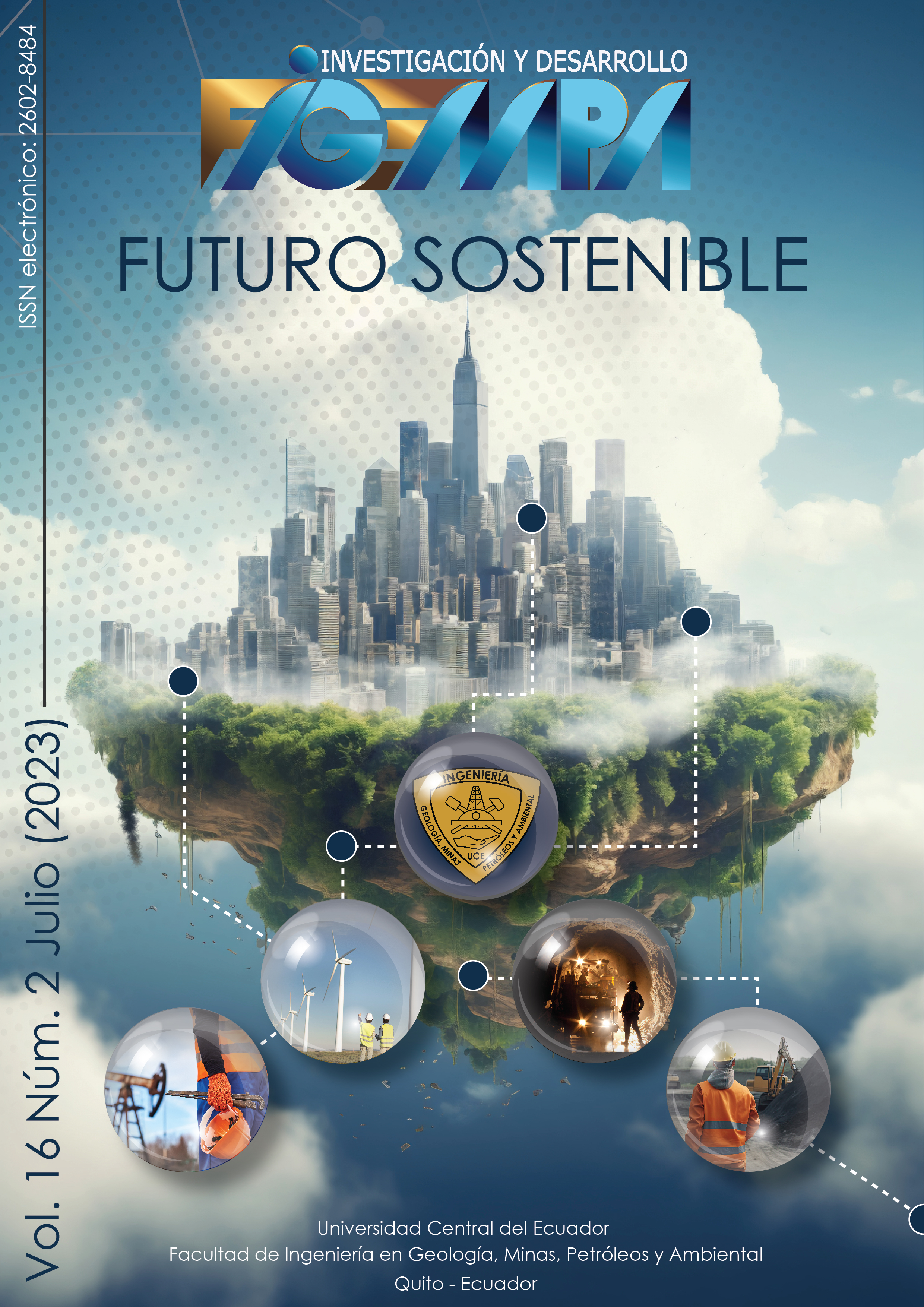Situation of Artificial Intelligence in Ecuador in relation to the leading countries of the Southern Cone region
Main Article Content
Abstract
The objective of this work is to identify and understand the status of the Artificial Intelligence (AI) ecosystem in Ecuador, for which a methodology for measuring the status of AI applied to the leading countries in this area of the region is defined, pretending to reflect the situation of the Artificial Intelligence Ecosystem; therefore, the Tortoise AI Index methodology is taken as a reference, which defines three pillars of analysis; investment, innovation and implementation, which uses 143 indicators divided into seven sub-pillars: Talent, Infrastructure, Operating Environment, Research, Development, Government and Commercial Strategy. The proposal maintains the first five subpillars and uses a new one called Institutionality that integrates government and commercial strategies. The research subscribes to a descriptive, quantitative and analytical method of reviewing secondary sources and databases of organizations, companies, governments, among others. The findings show that there is a significant gap when comparing the AI ecosystem in Ecuador with the ecosystems of Argentina, Brazil, Chile, Colombia, and Uruguay; showing an incipient use, adoption of this technology and the lack of public policies that encourage the use of AI as a means of social, economic and environmental development.
Downloads
Metrics
Article Details

This work is licensed under a Creative Commons Attribution 4.0 International License.
References
Accenture (24 de junio de 2022) El arte de la madurez de la IA: de la práctica a los resultados. https://www.accenture.com/es-es/insights/artificial-intelligence/ai-maturity-and-transformation
Alekseeva, L., Azar, J., Gine, M., Samila, S., & Taska, B. (2019) The Demand for AI Skills in the Labor Market. Labour Economics, Forthcoming, 1-60.
BID (2020) Inteligencia artificial Gran oportunidad del siglo XXI. Washington, D.C.: Banco Interamericano de Desarrollo.
Cañado, N. (2022) La inteligencia artificial aplicada al C2. Revista General de Marina, 282, 521-526.
Castro, D., McLaughlin, M., y Chivot, E. (2019) Who Is Winning the AI Race: China, the EU or the United States? – Center for Data Innovation. https://datainnovation.org/2019/08/who-is-winning-the-ai-race-china-the-eu-or-the-united-states/
Cepal (20 de noviembre de 2021) Comisión Económica para América Latina y el Caribe. Cumbre de Inteligencia Artificial en América Latina: https://www.cepal.org/es/notas/cumbre-inteligencia-artificial-america-latina
Diario Popular (2021) La Unesco crea marco ético y político para la Inteligencia Artificial. https://www.diariopopular.com.ar/tecnologia/la-unesco-crea-marco-etico-y-politico-la-inteligencia-artificial-n601417
ECB (2022) El Banco Central Europeo. https://www.ecb.europa.eu/ecb/html/index.es.html
Ekholm, B. y Rockström, J. (2019) Digital technology can cut global emissions by 15%. Here’s how. Cologny: Foro Económico Mundial.
European Commission (28 de septiembre de 2022) Liability Rules for Artificial Intelligence. https://ec.europa.eu/info/business-economy-euro/doing-business-eu/contract-rules/digital-contracts/liability-rules-artificial-intelligence_en
Fouirner Guimbao, J. (13 de julio de 2021) Inteligencia artificial: una carrera hacia un futuro tecnológico. Documento de Opinión IEEE 89/2021: https://www.ieee.es/Galerias/fichero/docs_opinion/2021/DIEEEO89_2021_JOAFOU_Inteligencia.pdf
Gartner (2021) Top Strategic Technology Trends for 2022 12. Trends Shaping the Future of Digital Business. Stanford: Gartner.
Gartner (21 de septiembre de 2021) Las 4 tendencias que prevalecen en el Hype Cycle de Gartner para la IA. https://www.gartner.com/en/articles/the-4-trends-that-prevail-on-the-gartner-hype-cycle-for-ai-2021
Gómez Mont, C., del Pozo, C. M., Martínez Pinto, C., y Martín del Campo Alcocer, A. V. (2020) La inteligencia artificial al servicio del bien social en América Latina y el Caribe: Panorámica regional e instantáneas de doce países. Banco Interamericano de Desarrollo. https://doi.org/10.18235/0002393
iProUP (2020) Inteligencia artificial, clave en el eCommerce: este es su impacto. https://www.iproup.com/innovacion/11879-inteligencia-artificial-clave-en-el-ecommerce-este-es-su-impacto17
Knudsen, M. y Kaívo-Oja, J. (2020) Collaborative Robots: Frontiers of Current Literature. Journal of Intelligent Systems: Theory and Applications, 13-20.
Kotis, K. (febrero de 2021) Artificial general intelligence and creative economy. Academia Letters, Article 260. https://www.academia.edu/45075226/Artificial_General_Intelligence_and_Creative_Economy
Lane, M. y Saint-Martin, A. (2021) The impact of Artificial Intelligence on the labour market: What do we know so far? OECD Social, Employment and Migration Working Papers, 256, OECD Publishing, Paris. https://doi.org/10.1787/7c895724-en.
Market Research Future (2022) AI in social media market size, growth and forecast 2020 –2030. https://www.marketresearchfuture.com/reports/ai-in-social-media-market-6089
Martínez, C. (24 de enero de 2018) Investigación descriptiva: definición, tipos y características. https://www.lifeder.com/investigacion-descriptiva/
McCarthy, J. (2007) What is Artificial Intelligence? Recuperado el 06 de 2021, de Computer Science Department. Stanford University: http://www-formal.stanford.edu/jmc/whatisai.pdf
Osman, M. (2019) Estadísticas de Ecommerce para 2019 - Chatbots, Voz, Omni-Channel Marketing. https://kinsta.com/es/blog/etadisticas-ecommerce/
Oxford Insights (2021) Government AI Readiness Index 2021. https://www.oxfordinsights.com/government-ai-readiness-index2021
Parlamento Europeo (2021) Proyecto de informe sobre la Inteligencia Artificial en la Era Digital (2020/2266(INI)) Bruselas: Parlamento Europeo 2019-2024.
Purdy, M., y Daugherty, P. (2017) How AI industry profits and innovation boosts. https://www.accenture.com/fr-fr/_acnmedia/36dc7f76eab444cab6a7f44017cc3997.pdf
Rao, A., y Verwei, G. (2017) Sizing the prize What’s the real value of AI for your business and how can you capitalise? PWC. https://www.pwc.com/gx/en/issues/analytics/assets/pwc-ai-analysis-sizing-the-prize-report.pdf.
Stanford University (2021) The AI Index Report 2022 – Artificial Intelligence Index. https://aiindex.stanford.edu/ai-index-report-2022/
Statista (2022) Total global AI investment 2015-2021. https://www.statista.com/statistics/941137/ai-investment-and-funding-worldwide/
TMG (2020) Repaso de las políticas y desarrollos latinoamericanos sobre inteligencia artificial. Virginia: Telecommunications Management Group, Inc.
Tortoise (2019) Tortoise. https://www.tortoisemedia.com/
Viewnext (2019) Aplicaciones de la Inteligencia Artificial en la actualidad. https://www.viewnext.com/inteligencia-artificial-aplicaciones/
World Economic Forum (2019) Digital technology can cut global emissions by 15%. Here’s how. https://www.weforum.org/agenda/2019/01/why-digitalization-is-the-key-to-exponential-climate-action/
World Economic Forum (2020) Jobs of Tomorrow Mapping Opportunity in the New Economy. Geneva: World Economic Forum.

